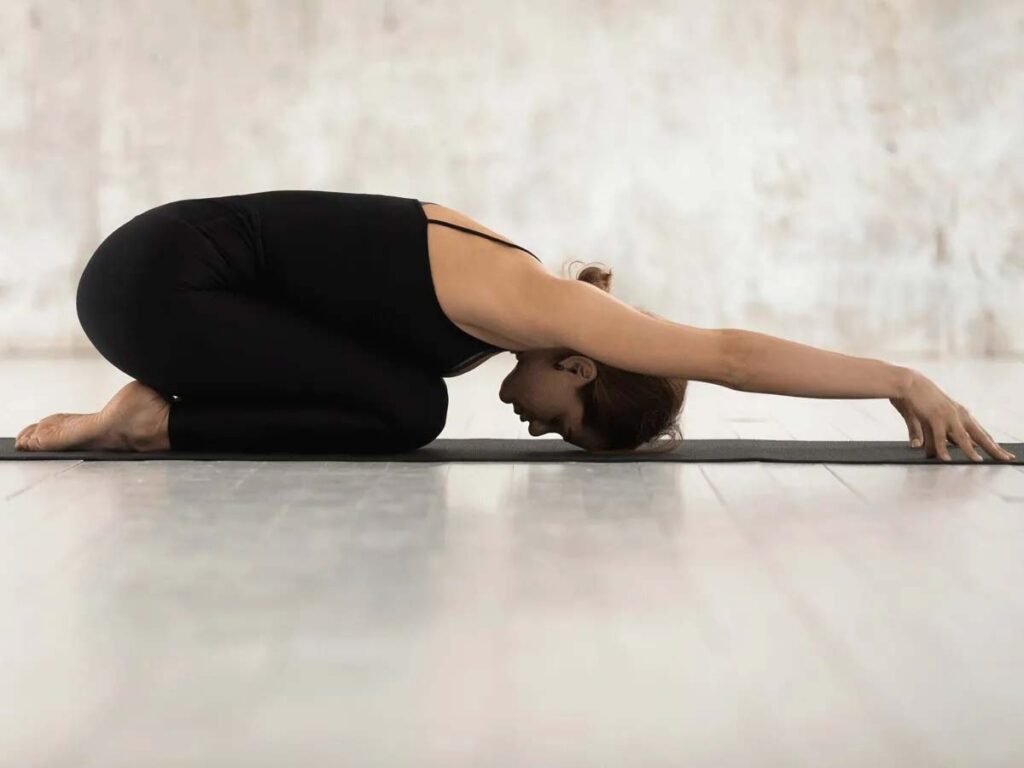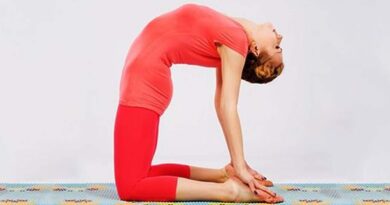Balasana Yoga: Discover Deep Relaxation and Renewal with Child’s Pose
Table of Contents
Introduction
Balasana Yoga, or Child’s Pose, is a restorative and comforting yoga posture that promotes deep relaxation, introspection, and rejuvenation. Derived from the Sanskrit words “bala” (meaning child) and “asana” (meaning pose), Balasana mimics the fetal position, offering a gentle retreat and a sanctuary of peace on the yoga mat.
In this article, we will explore the steps, benefits, variations, and precautions associated with Balasana, guiding you to embrace the nurturing qualities of this calming pose in your yoga practice.
How to Perform Balasana Yoga
To practice Balasana, follow these step-by-step instructions
Step 1: Begin on your hands and knees in a tabletop position, with your wrists under your shoulders and knees hip-width apart.
Step 2: Slowly lower your hips toward your heels as you exhale.
Step 3: Allow your forehead to rest on the mat, or if that’s not comfortable, you can stack your hands and rest your forehead on them.
Step 4: Extend your arms forward, lengthening through the fingertips, or alternatively, you can relax your arms alongside your body with your palms facing up.
Step 5: Softly close your eyes and focus on your breath, allowing it to flow naturally and deeply into your belly.
Step 6: Relax your entire body, surrendering any tension or tightness.
Step 7: Stay in Balasana for as long as feels comfortable, breathing softly and letting go with each exhalation.
Step 8: To come out of the pose, gently press into your hands and slowly lift your torso, returning to the tabletop position.
Benefits of Balasana Yoga
Regular practice of Balasana provides numerous physical, mental, and emotional benefits, including:
Deep Relaxation
Balasana induces a state of profound relaxation, allowing the body and mind to release stress, tension, and fatigue.
Spinal Alignment
This pose gently stretches the spine, promoting proper alignment and relieving back and neck discomfort.
Calming the Mind
Balasana encourages introspection and mindfulness, helping to calm a busy mind, reduce anxiety, and promote mental clarity.
Relieving Physical Discomfort
The gentle compression and elongation of the abdomen in Child’s Pose can provide relief from digestive discomfort and menstrual cramps.
Opening the Hips and Shoulders
Balasana gently stretches the hips, thighs, and ankles, while also creating space and releasing tension in the shoulders and upper back.
Cultivating Surrender and Acceptance
Child’s Pose invites a sense of surrender and acceptance, fostering a nurturing connection with oneself and promoting self-care.

Variations of Balasana Yoga
Explore these variations of Balasana to modify the pose according to your needs and comfort level:
Extended Child’s Pose
In this variation, keep your arms extended forward, allowing for a deeper stretch in the shoulders and upper back.
Wide-Knee Child’s Pose
Open your knees wider than hip-width apart, providing a gentle stretch to the inner thighs and hips.
Supported Child’s Pose
If you find it challenging to rest your forehead on the floor, place a folded blanket or bolster under your forehead for support and elevation.
Precautions and Contraindications
While Balasana is generally safe for most practitioners, it’s important to consider the following precautions:
a. If you have knee or ankle injuries, it’s advisable to place a folded blanket or bolster under your buttocks or between your calves and thighs for added support and comfort.
b. Pregnant women can practice Balasana with modifications, such as separating the knees wider to accommodate the growing belly or using props for support.
c. If you have any specific medical concerns or conditions, it’s recommended to consult with a healthcare professional or a qualified yoga instructor before practicing Balasana.
Conclusion
Balasana, the Child’s Pose, offers a nurturing and introspective experience, providing a sanctuary of relaxation and renewal on the yoga mat. Regular practice of this pose promotes deep relaxation, mental clarity, and physical comfort.
Embrace the comforting qualities of a child as you surrender into Balasana, creating space for self-care and inner reflection. Approach this pose with gentleness, mindfulness, and self-compassion. Allow the simplicity of Child’s Pose to bring a sense of calm, tranquility, and rejuvenation to your yoga practice.





